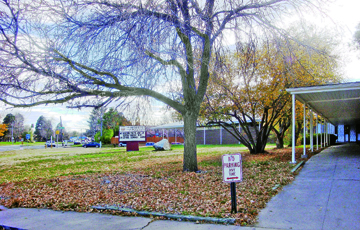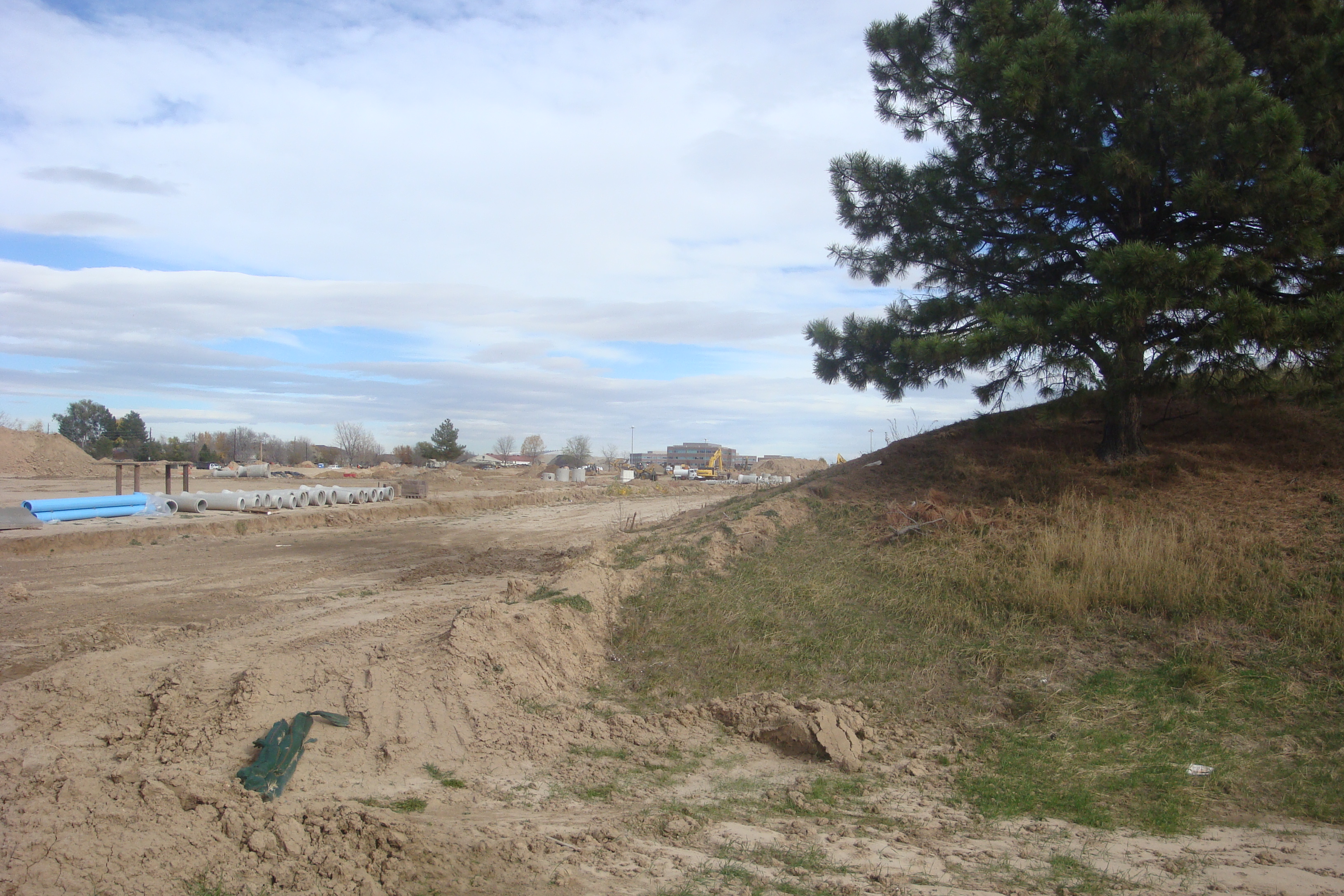Buchanan’s Planning Board Process Called ‘Corrupt, Consultant-Dominated, Unlawful Cesspool’ In Lawsuit
by Glen Richardson
In a blockbuster lawsuit filed October 14 in Denver District Court residents in Denver’s Crestmoor and Lowry neighborhoods have taken legal action to “reform a corrupt, consultant-dominated, unlawful process” regarding rezoning in the City and County of Denver. In particular the residents are outraged by the rezoning of a block of 70 acres of land previously called the Buckley Annex and now referred to as Boulevard One. It was once a part of the old Lowry Air Force Base and the site at one time of the Air Force Finance Center.
Residents in vario us east Denver neighborhoods are challenging the Denver Planning Board’s October 1 rezoning decision because it did not follow the criteria set forth in Denver’s Zoning Code. In an attempt to hide from court review the actions of the Planning Board, the City, after being served with the lawsuit, quickly withdrew one of its two zoning proposals “for further consideration.”
us east Denver neighborhoods are challenging the Denver Planning Board’s October 1 rezoning decision because it did not follow the criteria set forth in Denver’s Zoning Code. In an attempt to hide from court review the actions of the Planning Board, the City, after being served with the lawsuit, quickly withdrew one of its two zoning proposals “for further consideration.”
In addition the Lowry Redevelopment Authority (LRA) withdrew its C-MX-5 zoning application in an attempt to avoid judicial review of its actions. LRA is a quasi-governmental joint venture set up by the cities of Denver and Aurora to oversee the redevelopment of the Lowry Air Force Base. LRA once enjoyed broad support in the community but ever since the giveaway of open space land, called Lowry Vista, to a developer for $10 in a byzantine set of transactions, it is now viewed by many as every bit as corrupt and incompetent as Brad Buchanan and the Planning Board.
The complaint points out that LRA Executive Director Monty Force had “his own personal conflict of interest, with an LRA employment agreement that rewarded him financially for high density development on the Buckley Annex site.”
In the complaint it is alleged that LRA “hand-picked a group of people it believed shares its agenda for high density development and labeled the group its “Community Advisory Committee” contending these hand-picked supporters could speak for the interests of residents in surrounding neighborhoods.” Using that committee LRA then pushed through a badly tainted General Development Plan (GDP) notwithstanding widespread opposition throughout the affected neighborhoods.
As detailed in the homeowners’ complaint, Plaintiffs challenge the procedure Buchanan, who is the paid head of the Denver Community Planning & Development Department (CPD), and the Planning Board used to consider the rezoning Text Amendment for the Buckley Annex/Boulevard One parcel. The rezoning decision resulted in the adoption of a high-density framework with five-story buildings with minimal or no setbacks.
In addition, through the lawsuit, Plaintiffs seek to reform the “corrupt process” Buchanan and his Planning Board used in considering additional zoning changes to the Buckley Annex parcel and throughout Denver to prevent “future flawed zoning decisions that harm neighborhoods and residents.” Plaintiffs, however, are not challenging the four single family and row house zoning decisions, and that construction is underway.
Residents in Lowry’s surrounding stable residential neighborhoods with strong property values — Park Heights, Mayfair Park, Montclair, Crestmoor, Hilltop and Virginia Vale — do not want to see the Buckley parcel become a ghetto of new, high-density mixed-use buildings that create a traffic and parking nightmare for surrounding residents due to the lack of effective mass transit. Traffic jams already occur along Monaco Parkway, Quebec and Alameda. LRA wants to jam 800-plus residential units and an additional 150,000 square feet of retail and commercial space into the Buckley parcel. If approved, the development is projected to add an estimated 10,000 new car trips per day to the surrounding streets and neighborhoods.
Betrayal By Buchanan
In the lawsuit Plaintiffs claim Buchanan, the CPD and the Planning Board exceeded their jurisdiction and abused its responsibility, based on the evidence in the record of the October 2014 quasi-judicial hearing. Among other things, the lawsuit says that Buchanan and Planning Board members admitted on the record that they lacked time to read and consider the public comments submitted in writing before the hearing, and recognized that the process was flawed.
Even more scandalous, Buchanan allowed Board Member Jim Bershof to participate in the deliberations and influence the votes of the other members even though he has a financial interest in the Lowry Text Amendment. He also voted on the decision despite the fact he and his company OZ Architecture is advocating a zoning change f or the Mt. Gilead Church property across Monaco Parkway from the Buckley Annex parcel. The proposed change at the church property is based in part on the limited setbacks, tall building heights, and high-density reflected in Buckley Annex/Boulevard One.
or the Mt. Gilead Church property across Monaco Parkway from the Buckley Annex parcel. The proposed change at the church property is based in part on the limited setbacks, tall building heights, and high-density reflected in Buckley Annex/Boulevard One.
It was apparently on the advice from and the rationale of representatives in the City Attorney’s office that Bershof failed to disclose the details about his role with the Mt. Gilead Church application. According to the lawsuit Bershof’s voting on the decision, and his failure to recuse himself violated both the Denver Municipal Code and the City’s ethics rules.
We-They Showdown
Defendants in the lawsuit, in addition to Buchanan and board member Jim Bershof, are other members: Andy Baldyga, Shannon Gifford, Renee Martinez-Stone, Brittany Morris Saunders, Joel Noble, Susan Pearce, Arleen Taniwaki, Julie Underdahl, Frank Schultz and Chris Smith. The City and County of Denver is also named as a defendant. Plaintiffs are Chris O’Connor, David Mitzner, William O’Rourke and John Fischer. The plaintiffs’ attorney is area resident Greg Kerwin who is with the internationally renowned law firm of Gibson, Dunn & Crutcher.
O’Connor, president of the Lowry United Neighborhoods, and one of the plaintiffs, tells the Chronicle that like many others, “I am tired of our city leaders — elected purportedly to represent residents of Denver — adopt Hancock’s mantra that we must turn Denver into a world class city without asking how we will move or park people, or considering what existing taxpayers and existing neighborhoods want.” Furthermore, she adds, they haven’t considered whether our less-than-world-class fledgling transit network can realistically support this vertical vision?
Plaintiff Mitzner, a resident of Lowry since June 2000, says he believes “that the vast majority of east Denver residents do not want the City to allow a Cherry Creek type zone district in the midst of this east Denver residential area.”
John Fischer who is President of Crestmoor Park Home Owners Inc., First Filing, argues that Crestmoor should be “buffered from development, not diminished by it.” In a letter to the Denver Planning Board in April of last year he stated, “We oppose commercial development anywhere close to Crestmoor Park, a crown jewel of Denver and the centerpiece of our neighborhoods. It is crucial that we maintain the openness of the east side of the park along Monaco.” Longtime resident William O’Rourke lives in Park Heights, the first area built in Lowry. It is located on the southwest corner of Alameda & Quebec adjacent to the Buckley Annex.
INC Rolls Up Sleeves
Larry Ambrose, President of the Inter-Neighborhood Cooperation (INC) — the umbrella group for all of Denver’s neighborhood associations — says they have been concerned about the process as a result of both the Buckley Annex and St. Anthony’s (South Sloan’s Lake) developments. He says the two developments have followed almost parallel processes, with similar facts and almost identical abuses of process.
“As a result of resolutions passed by INC in February of this year, the Planning Office Director Brad Buchanan first agreed to a public process involving the neighborhoods to review how open space is calculated. In subsequent meetings he agreed to put all aspects of how GDPs affect the zoning and planning process including addressing whether the formula for calculating open space is adequate, whether the applicants for GDPs should control the planning and public meeting process and even whether GDPs should come after zoning rather than before zoning as it did prior to the 2010 changes to the Denver Zoning Code.” This process with INC, Ambrose reveals, is going on now with Denver Planning at the table.
“Speaking as an individual and not for INC as the organization has not yet taken a formal position, unfortunately, two of the largest developments that will have long-term ramifications and negatively affect thousands of current residents are being put into place as a result of GDPs that slipped through as a result of the current flawed GDP ordinance. The most devastating effect of these flaws is to allow the Buckley Annex and Sloan’s Lake GDPs to serve as ‘backdoor’ zoning where these developer manipulated plans which are not adopted plans approved by City Council, have taken on the appearance of legitimacy.”
Mayor, LRA Ignore Concerns
In these instances Ambrose says, “the GDP processes have had the effect of dismissing the neighborhoods’ legitimate concerns, confusing residents into just what the process is and what process is due while receiving rubber-stamp approval from the City. I can say that INC has taken stances before in support of challenges to City actions through the judicial branch where legitimate concerns have been ignored by the Mayor, his agencies and City Council.”
Lowry’s O’Connor also notes that the LRA continues to say there have been 60 meetings and a comprehensive public process. But to say 60 meetings indicates consensus is misleading. “There was no consensus. The overwhelming public sentiment was that the new development needed to comply with original Lowry Design Guidelines and preserve the overall look and feel of Lowry.” She also points out that consultants have spun the story that this is a compromise, and that most participants in the process are happy. O’Connor says, however, that two surveys by Crestmoor and Lowry during 2013 indicate that is not the case.
She also remembers that residents from numerous Denver neighborhoods — not just Lowry — opposed developer IRG’s process in creating a General Development Plan as well as the 2010 rezoning of the 80 acre Lowry landfill parcel called Lowry Vista. “We pointed out the City’s failure to follow City Plans during that process. However, although we believed the City’s approvals were without basis, the actions went unchallenged in court,” recalls Lowry land use watchdog O’Connor. Nevertheless, Denver residents are finally challenging the actions by the Planning Board.
O’Connor asks: Are our leaders oblivious to the sentiment that most residents dread the thought that our neighborhoods are poised to go the way of Cherry Creek? The Urban Center Zoning in Cherry Creek’s newly approved zone district is to be applied to both the Quebec and Monaco “edges” of Buckley Annex. “No doubt this will lead to further up-zonings in other sections of Lowry,” she warns. The piecemeal nature of these Lowry rezonings is deliberate and serves to wear out the public that has already seen four parcels on Buckley Annex rezoned, and faces at least three more.

